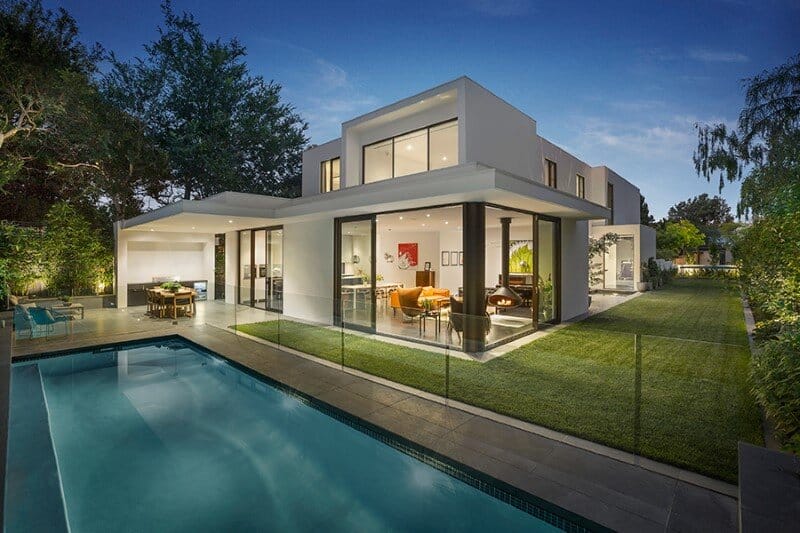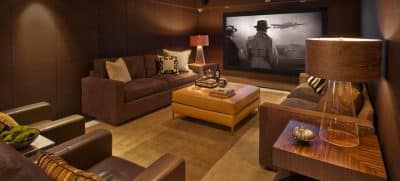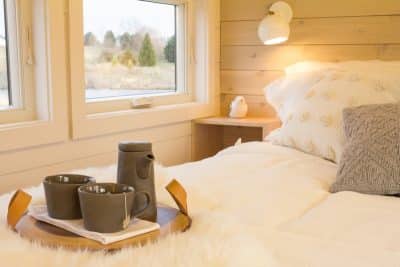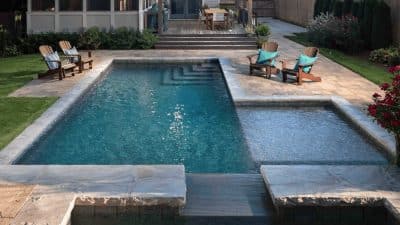
Interior design is a constantly evolving field, reflecting changes in lifestyle, technology, and environmental consciousness. Whether you’re looking to revamp your space completely with a home makeover or simply introduce small yet impactful updates, staying informed about the latest trends can help you create a home that is both stylish and functional. From sustainable materials to smart technology, this guide explores key interior design trends that are shaping modern living spaces.
Sustainable Luxury
Sustainability has been a significant focus of interior design and continues to gain momentum. Sustainable luxury is defined by the use of visually beautiful yet environmentally friendly materials. Think furniture made from recycled glass, organic fibres in fabrics, and reclaimed wood decor. The trend also emphasizes energy-efficient homes with natural ventilation and solar lighting, proving that beauty and sustainability can coexist seamlessly.
Beyond materials, sustainable luxury also incorporates ethical production practices and responsible sourcing. Homeowners are seeking brands that prioritize fair wages, sustainable forestry, and low-carbon production. Investing in long-lasting, high-quality pieces rather than disposable decor is another way to embrace sustainability and elevate your home makeover
Maximalism
Maximalism is the opposite of minimalism, embracing abundance and bold expression. This design approach celebrates intense colours, intricate patterns, and varied textures to create visually rich and dynamic environments. Say goodbye to neutral beige and white—this trend is all about infusing energy and personality into your home’s decor.
Maximalist interiors often feature layered textiles, mixed prints, and bold statement pieces. It’s about creating a curated space that tells a story rather than adhering to a single aesthetic. This trend encourages a mix-and-match philosophy, allowing for an eclectic but cohesive look, making it a perfect choice for an expressive home makeover.
Curves Are the New Lines
The straight, angular furniture of recent years is making way for a softer aesthetic. Curved furniture is a key trend, with rounded sofas, circular coffee tables, and flowing designs that bring a sense of movement to a room. The shift from rigid lines to softer forms fosters a more relaxed and inviting ambience.
Curves also bring a sense of nostalgia, drawing inspiration from the Art Deco and mid-century modern eras. This trend extends beyond furniture to include arched doorways, rounded mirrors, and curved kitchen islands, adding elegance and fluidity to interior spaces.
Multifunctional Spaces Are a Must
With remote work becoming a standard, the need for adaptable, versatile spaces within the home has intensified. This trend advances with more creative solutions. Rooms will no longer serve a single purpose—imagine a home office that doubles as a guest room or a living area that transforms into a yoga studio. Smart storage solutions, retractable furniture, and partition screens will help maximize space efficiency.
Additionally, built-in shelving, fold-away desks, and modular furniture allow homeowners to make the most of smaller spaces. A well-planned multifunctional area not only increases usability but also contributes to a cleaner, more organized home, essential for a successful home makeover.
Smart Homes, Smarter Interiors
Technology continues to transform our living spaces. Smart homes are integrating even more seamlessly with interior design. Beyond voice-activated systems and smart lighting, expect hidden technology such as built-in charging stations in furniture, mirrors with interactive displays, and walls that adjust to user preferences, making daily life more convenient and futuristic.
Home automation is also expanding to include AI-driven climate control, security systems, and smart appliances that adapt to users’ routines. The goal is to create a home that enhances efficiency while maintaining a warm, aesthetically pleasing atmosphere.
Bringing Nature Indoors
The biophilic design movement remains strong, incorporating natural elements into interior spaces. Expect more innovative ways to integrate nature indoors—large indoor plants, vertical gardens, and water features will create a serene and organic atmosphere. Natural materials like stone, wood, bamboo, and earth-toned palettes will dominate, enhancing a sense of tranquility and connection to nature.
Indoor greenery not only enhances aesthetics but also improves air quality and mental well-being. Living walls, hanging plants, and even small indoor water fountains can transform a space into a peaceful retreat from urban life.
Personalisation is Key
Cookie-cutter interiors are a thing of the past. Personalization prioritizes individuality, encouraging homeowners to showcase their personality through custom furniture, unique decor, and meaningful artwork. Mixing antique finds with contemporary pieces allows for a more personal and expressive home design.
Whether through custom-built shelving, DIY projects, or curated art collections, personalisation ensures that a space truly reflects the lifestyle and history of its inhabitants. Homeowners are increasingly valuing one-of-a-kind pieces that tell a story and make their living space feel truly unique.
Vintage Meets Modern
Blending vintage and modern elements is a defining trend. Imagine mid-century modern furniture paired with sleek, contemporary artwork or a vintage Persian rug complementing minimalist lighting. This fusion creates a balanced, timeless aesthetic that is both nostalgic and forward-thinking.
The key to mastering this style is balance—pairing old-world charm with clean, modern lines creates contrast without clashing. Using statement vintage items as focal points within a contemporary setting adds character without overwhelming the design.
Statement Lighting
Lighting is taking centre stage, evolving from a functional necessity to an artistic statement. Oversized chandeliers, sculptural floor lamps, and creative pendant lighting will become focal points, adding sophistication and drama to interiors. The right lighting design can transform any space into a visually stunning environment.
Lighting is no longer just about brightness—it’s about setting a mood. Layered lighting, such as combining ambient, task, and accent lighting, helps create a well-rounded space. Smart lighting options now allow homeowners to adjust brightness and colour temperature to match different times of day and activities.
The Importance of Texture
Texture plays a crucial role in interior design, enhancing warmth and depth. Expect to see plush velvet seating, textured walls, and a combination of materials like wood, metal, and fabric to create contrast and visual intrigue. Layering different textures makes spaces feel richer and more inviting.
Tactile elements like woven rugs, stone countertops, and linen upholstery add dimension to interiors. Incorporating a mix of smooth, rough, soft, and hard textures ensures that a space is visually and physically engaging.
Earthy and Warm Color Palettes
Soft, earthy tones are gaining popularity as they create a cozy and inviting atmosphere. Shades of terracotta, olive green, warm taupe, and deep blues are making their way into homes, replacing cooler greys and stark whites. These tones complement natural materials and work well in both modern and rustic interiors.
Warm neutrals provide a sophisticated backdrop that allows bolder accents to shine. Whether used on walls, furniture, or decor accessories, earthy colours help create a grounded, calming environment.
Conclusion
A successful home makeover is all about combining timeless style with modern functionality. Interior design is constantly evolving, emphasizing sustainability, personalization, and the seamless integration of nature and technology. By embracing these trends, you can create a home that is stylish, functional, and deeply reflective of your values. Whether you prefer a maximalist approach, a smart home setup, or a mix of vintage and modern decor, there are endless ways to elevate your living space.








